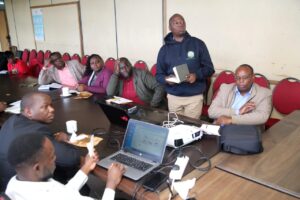6 lions die of poisoning in Uganda

By Mourice Seretta
Over the weekend, Uganda Wildlife Authority (UWA) announced the death of six lions in Queen Elizabeth National Park, Kanungu district in what’s believed to be suspected poisoning.
The lion carcasses were found with most of their parts missing. Eight dead vultures were also found at the scene. Over the past 10 years, the lion population in the Ishasha sector of Queen Elizabeth National Park has declined from 6 lions per 100 km2 to 4 lions per 100km2. In 2018, eleven lions, including eight cubs were poisoned in the same park, but sadly to date there has never been any official public pronouncement on the outcome of the investigations into that incident.
Edith Kabesiime, Wildlife Campaigns Manager at World Animal Protection says: “Given that some body parts of the lions were found missing in this particular case, we cannot rule out illegal trafficking. For many years, tiger bones and other parts have been used in some Asian countries, especially China and Vietnam to produce traditional medicines. But following the banning of use of tiger in traditional medicine in China in 1993, the demand in Asia for lion bones as an alternative to tiger bones have increased in recent years. We call upon the Uganda Wildlife Authority to move with speed in strengthening the protection of lions and other wildlife in Uganda and pursue this case to its logical conclusion.”
World Animal Protection strongly condemns the illegal killing of wild animals as it negatively impacts on animal welfare, conservation and public health. Drawing from developments overtime, extinction and negative public health impacts of such acts are inevitable if these trends continue. “There is enormous scientific evidence that shows that as many as 63 pathogens associated with lions can actually cause disease in humans. This is enough cause to step up efforts in securing the future of lions, people and planet”, adds, Gilbert Sape, Global Head of Campaign – Traditional Medicine at World Animal Protection.







